22 Effective No-Equipment Workouts You Can Do at Home
At-home exercises to motivate you to workout and kick your excuses out of the window.
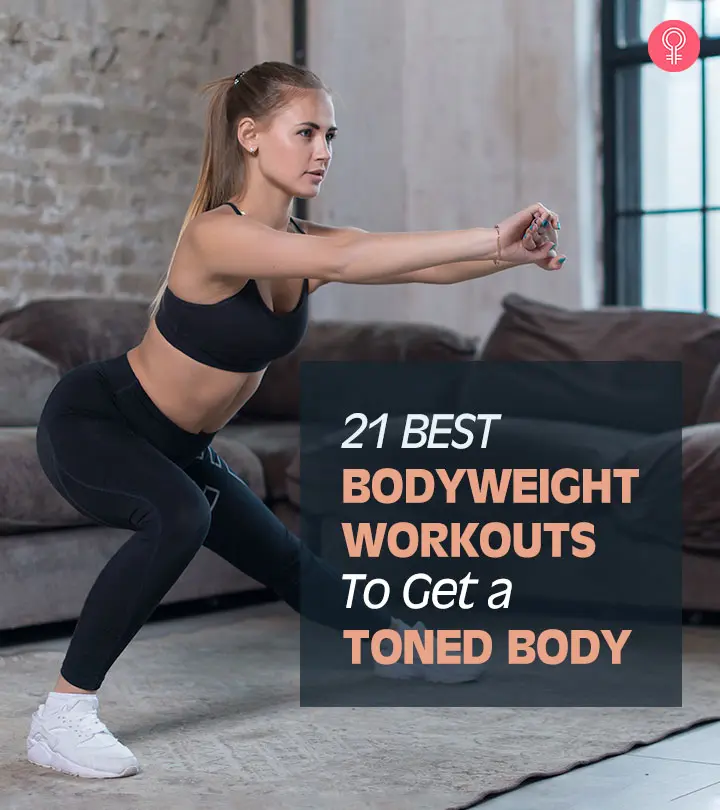
Image: Shutterstock
Have you ever wondered if you can perform no-equipment workouts at home? Well, here’s the good news. We will share a few effective calorie-burning bodyweight exercises that Don’t require any equipment and provide full-body workouts at home.. Lifting your own body weight is better than lifting weights in the gym.
Bodyweight exercises improve the cardiovascular system, strength, and stamina and strengthen various large and small muscle groups. They help tone the muscles and increase muscle power. They are also beneficial for the elderly to improve lean muscle mass (1).
A study reveals that lower body bodyweight exercises strengthen lower limb muscle force (2). You can, in fact, strengthen and tone your whole body with bodyweight exercises. Michael Garrico, a fitness trainer, says, “If you are a beginner, it is important to remember that the best workout routines are the ones that you can stick with. There are a lot of ways to get started with working out at home: you can do bodyweight exercises or push-ups and pull-ups on your own, or try doing an activity like jumping jacks or burpees while someone else holds your legs up high. You can also use exercise bands, resistance bands, or other tools that help you work out without equipment.”
You can practice full-body bodyweight workouts at home at your own convenience. Here are the 22 best no-equipment workouts to do at home. Keep scrolling!
 Workout Blueprint: Bodyweight Exercises
Workout Blueprint: Bodyweight Exercises- Frequency: Daily
- Benefits: Improve strength, tone the muscles, and increase muscle power.
- Equipment Needed: Exercise mat
- Space Required: Small area
- Assistance Required: No
- Who Should Avoid: Individuals with hip, knee, or joint pain and anyone who has undergone surgery recently.
In This Article
Warm-Up
You must warm-up for at least 10 minutes before you do no-equipment workouts at home.
Warming up is essential for any workout. It gets your blood flowing to your muscles, helps prevent injuries, and makes your workout better overall. Warming up is important to elevate body temperature, metabolic rate, and oxygen uptake (3).

You can check the following warm-up routine:
- Neck tilt – 1 set of 10 reps
- Neck rotations – 1 set of 10 reps
- Shoulder rotations – 1 set of 10 reps
- Arm rotations – 1 set of 10 reps
- Waist circles – 1 set of 10 reps
- Side bends – 1 set of 10 reps
- Side lunges – 1 set of 10 reps
- Spot jogging – 3 minutes
- Ankle rotation – 1 set of 10 reps
After warming up, you can do these no-equipment workouts at home to target your lower body.
Key Takeaways
- Improve your strength and stamina without equipment but with bodyweight exercises.
- Some exercises like squats, lunges, plank variations, crunches, and push-ups keep you fit without equipment.
- You can combine cardio, strength training, and breathing exercises for effective results.
- Consistency and proper form are vital things for achieving results with bodyweight exercises.
Legs/Lower Body Exercises
1. Calf Raises
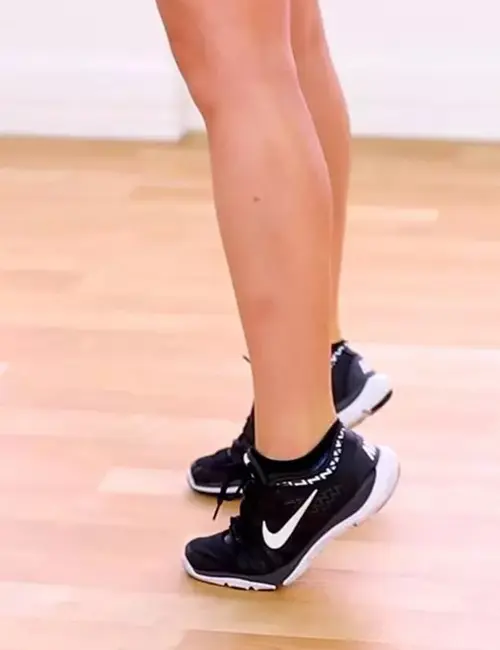
As people age, their muscles, especially in the legs, can become weaker, making it harder to move around. A simple exercise like calf raises, where you lift your heels off the ground and stand on your toes, can help strengthen the muscles in your lower legs. Research shows that elderly men who do calf raises regularly at home may stay protected against mobility problems that often come with aging, showing the effectiveness of this exercise (4).
Target – Calves
How To Do
- Stand straight with your feet hip-width apart, chest out, shoulders rolled out, and abs engaged.
- Raise your heels and hold for 1 second. Feel the stretch at the back on your lower legs.
- Slowly lower your heels and raise them again.
- For the next set, do the exercise faster with your feet wider apart.
Sets And Reps
3 sets of 20 reps
Common Mistakes To Avoid
- Avoid locking your knees, as this can strain the joints and lead to injuries.
- Don’t bounce during the exercise. Instead, ensure your movements are controlled and purposeful to prevent any strain.
Adjustments For Different Fitness Levels
- Beginner: Perform calf raises on a flat surface and with both feet for stability.
- Intermediate/Advanced: Try single-leg calf raises or add pauses at the top.
2. Squats

Squats are a foundational lower-body exercise. They work on your lower body and over time, may help strengthen muscles, tendons, and bones in the area, making them better at handling stress and preventing injuries (5).
Target – Quads, hamstrings, outer thighs (vastus lateralis), and glutes
How To Do
- Stand straight with your feet hip-width apart.
- Draw your arms forward, perpendicular to the ground.
- Keep your entire body tight and flex your stomach.
- Breathe deeply and lower your butt as if you are sitting on a chair. Your thighs should be parallel to the ground.
- Ensure your bent knees are not overshooting your toes. Keep your body straight and firm.
- Come back to your original position and repeat from the beginning.
Sets And Reps
3 sets of 20 reps
Harold Gibbons, a blogger, shares his experience of performing daily squats and sheds light on its benefits for the overall body. He shares his own personalized 6-day squat program with variations. On practicing the program he adds, “My body felt awesome. I wasn’t sore at all, EVER, my knees didn’t explode, my back felt awesome; it was pretty cool (i).” He suggests doing squats for improved mobility, strength, and overall body weight.
Common Mistakes To Avoid
- Ensure your knees don’t cave inward during the exercise, as this can cause knee strain and improper form.
- Don’t perform shallow squats. Ensure you squat low enough to fully engage the glutes and hamstrings.
Adjustments For Different Fitness Levels
- Beginner: Focus on shallow squats with proper form, and work on building strength before going deeper.
- Intermediate/Advanced: Move on to jump squats or one-legged squats to increase intensity and build power.
 Quick Tip
Quick Tip3. Jump Squats

Jump squats are an explosive version of the traditional squat. They target the lower body. A study published in the Journal of Sports Science and Medicine looked at the effect of an 8-week jump squat training program on healthy, young men and found that it improved multiple performance measures in the training group, including strength, jump performance, and sprint speed (6). This suggests that jump squats may help you become stronger and faster.
Target – Glutes, hamstrings, quads, and calves
How To Do
- Stand straight with your feet shoulder-width apart, chest out, shoulders relaxed, and abs engaged.
- Push your hips out, flex your knees, and get into a sitting posture. Your knees should not overshoot your toes.
- Get back up and jump. Throw your hands to the side to propel your body up.
- Land softly on the floor and squat down again.
Sets And Reps
3 sets of 15 reps
Common Mistakes To Avoid
- Avoid landing too hard, as this can cause joint strain and lead to injuries.
- Don’t allow your knees to go past your toes. Keep proper alignment to protect the knees..
Adjustments For Different Fitness Levels
- Beginner: Perform regular squats before adding the jump for controlled strength-building.
- Intermediate/Advanced: Add height to your jumps or include burpees between each squat for greater intensity.
4. Jump Lunges
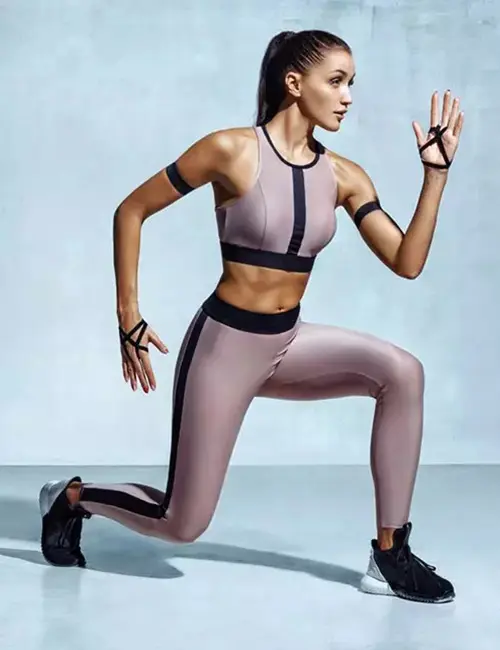
Jump lunges are a high-intensity exercise that alternates lunging legs while jumping between transitions. Research suggests that lunges may help improve muscle strength and balance in the lower body (7). When you add a jump to them, this further increases their intensity, targeting the areas more.
Target – Quads, hamstrings, and glutes
How To Do
- Stand straight with your feet shoulder-width apart, chest out, shoulders rolled back, and abs engaged.
- Take a step forward with your right leg.
- Flex both your knees and lower your body. Stop when your right thigh is parallel to the floor.
- Push your body up into a jump. Simultaneously, bring your left leg forward and right leg backward.
- Land softly on the floor.
Sets And Reps
3 sets of 10 reps
Common Mistakes To Avoid
- Don’t let your front knee go beyond your toes, as this can strain the knee joint.
- Don’t land too harshly. Aim for soft landings to avoid impact injuries.
- Ensure you engage your core to maintain stability and balance throughout the exercise.
Adjustments For Different Fitness Levels
- Beginner: Start with regular lunges without jumping, focusing on proper form and balance.
- Intermediate/Advanced: Increase the jump height to challenge your endurance and power.
5. Side Lunges
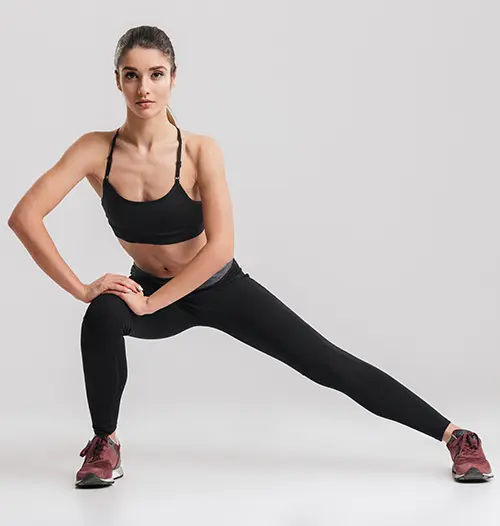
Lunges are important for strengthening the muscles around the hips and thighs and improving knee joint stability (8). Side lunges target the inner and outer thighs, glutes, and hips. They improve lateral movement, enhance hip mobility, and promote balance and stability in the lower body. However, it is important to note that side lunges generally place more stress on the knee joint (8). So, avoid doing them if you have bad knees.
Target – Inner and outer thigh muscles, hip flexors, glutes, quadriceps, and hamstrings
How To Do
- Stand straight with your feet shoulder-width apart, shoulders relaxed, and palms together.
- Lift your right leg off the floor and place it wide apart, as shown in the image. Make sure your toes are facing forward, shoulders relaxed, chest out, and core engaged.
- Flex your right knee, keep your spine straight, and lower your body to the right.
- Make sure your left leg is fully extended, and your left foot is flat on the floor. Keep your palms together for support. Hold this pose for a second and feel the stretch in your left inner thigh.
- Get back to the starting position.
- Do the same with the other leg also.
Sets And Reps
3 sets of 15 reps
Common Mistakes To Avoid
- Avoid allowing your knee to collapse inward, which may lead to discomfort and improper form.
- Don’t lean forward excessively. Keep your chest up and back straight to protect your spine.
- Don’t lunge too deeply if flexibility or form is lacking, as this can strain the knees or hips.
Adjustments For Different Fitness Levels
- Beginner: Don’t go too deep into the lunges and focus on balance and form before progressing.
- Intermediate/Advanced: Add weight or deepen the lunge for a greater challenge.
6. Donkey Kicks
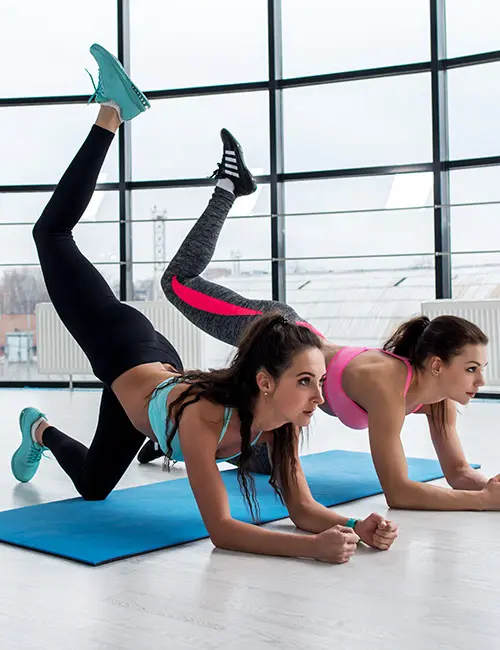
Donkey kicks are performed on all fours, kicking one leg upward and back. This exercise primarily targets the glute muscles, helping to tone and strengthen them.
A study published in the International Journal of Medicine and Health Development divided 80 women into groups performing squats, donkey kicks, and a control group. After 6 weeks, it was found that both squats and donkey kicks significantly improved gluteal muscle strength, with squats showing greater increases in muscle bulk and strength than donkey kicks. Donkey kicks were more effective at reducing fat in the gluteal region. This means that squats are ideal for muscle building and rehabilitation, while donkey kicks are better for fat reduction (9).
Target – Glutes, hamstrings, and hip flexors
How To Do
- Get on all fours.
- Lift your right leg off the floor.
- Keeping the knee flexed, kick your leg up toward the roof.
- Do this 15 times and then switch legs.
- This completes one set.
Sets And Reps
3 sets of 15 reps with each leg
Common Mistakes To Avoid
- Avoid arching your back excessively while kicking your leg, as this can cause lower back strain.
- Don’t kick too fast or with poor control, as this can reduce the effectiveness of the exercise.
Adjustments For Different Fitness Levels
- Beginner: Perform donkey kicks slowly with both knees on the ground for added stability.
- Intermediate/Advanced: Add ankle weights or increase the repetitions to challenge the glutes and core.
7. Single-Leg Deadlifts
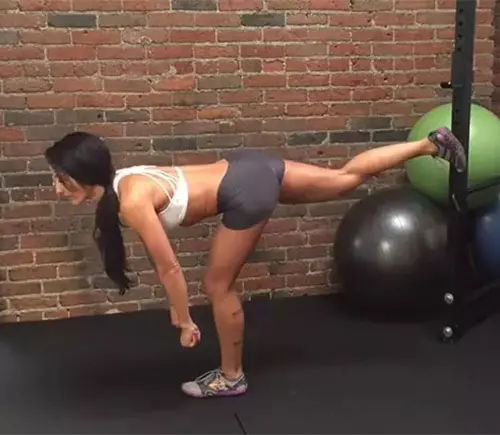
Single-leg deadlifts are a balancing exercise that works the hamstrings, quads, glutes, and core (10). So, they may help enhance leg stability and improve coordination.
Target – Quads, hamstrings, core muscles, and calves
How To Do
- Stand straight with your feet together. Roll your shoulders back, pop your chest up, and engage your core.
- Take a small step ahead with your right leg. This is the starting position.
- Keep your left knee loose, bend forward, and lift your left foot off the floor.
- Extend your hands and try touching the floor.
- Hold this pose for a second and then come back to the starting position.
- Repeat with the other leg.
Sets And Reps
3 sets of 8 reps
Common Mistakes To Avoid
- Don’t hunch or round your back during the movement, as this can strain your spine.
- Don’t lose balance. Keep your core engaged for stability throughout the movement.
Adjustments For Different Fitness Levels
- Beginner: Perform the exercise with support or use both legs for balance.
- Intermediate/Advanced: Add weights and perform the exercise with one leg for greater intensity. If you Don’t have weights at home, use filled water bottles.
8. Frog Jumps
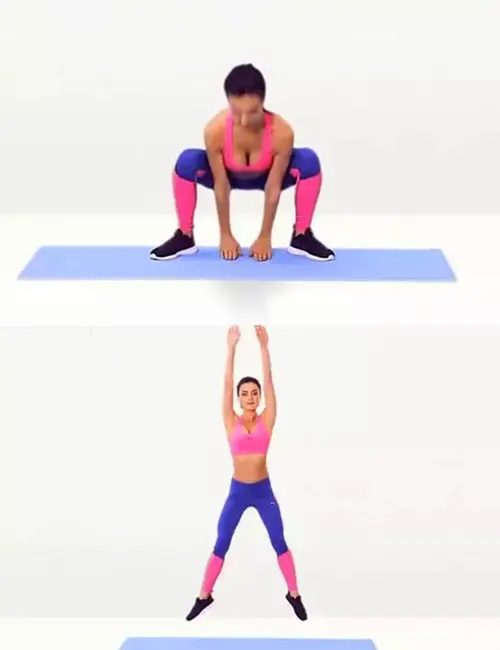
Frog jumps mimic a frog’s leap, combining a squat and an explosive jump forward. This helps engage the lower body muscles. Doing the exercise over time may help strengthen your legs and glutes.
Target – Quads, glutes, hamstrings, hip flexors, and calves
How To Do
- Stand straight with your feet wider than shoulder-width apart. Keep your chest up, shoulders rolled back, and core engaged.
- Flex your knees and do a full squat. Touch the floor with your fingertips.
- Get back up and take a small jump.
- Land softly on the floor and get into the full squat position.
Sets And Reps
3 sets of 12 reps
Common Mistakes To Avoid
- Avoid landing with your knees inward or with stiff legs, as this can cause joint strain.
- Don’t perform shallow jumps. Ensure a full squat before jumping to engage muscles properly.
Adjustments For Different Fitness Levels
- Beginner: Start with squat-to-stands instead of jumps, and gradually work your way up to full frog jumps.
- Intermediate/Advanced: Increase the jump distance or add a squat hold before jumping to intensify the exercise.
9. Wall Sits
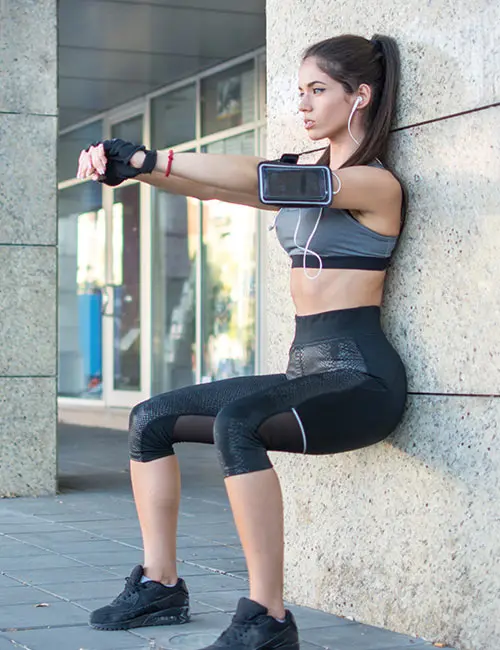
Wall sits, also called wall squats, involve holding a seated position with your back against a wall and knees bent. This not only improves your lower body and core strength but also aids blood pressure management (11).
A study published in the Journal of Sports Sciences aimed to assess the suitability of wall sits as a home-based exercise for reducing resting blood pressure. Twenty-three participants performed a 2-minute wall squat at various knee joint angles, ranging from 135° to 90°, on 15 occasions. The results showed that heart rate and blood pressure were relatively low at a 135° knee angle, and increased significantly at 90° (11). This means that if you aim at reducing your blood pressure, you may perform the exercise at a 135° angle. However, if you struggle with low blood pressure, a 90° angle may help. However, since these are specific angles, you should consult a doctor before doing so.
Target – Quadriceps, core muscles, hamstrings, and glutes
How To Do
- Stand with your back to the wall and your feet 2 feet away from it.
- Sink your bottom down as if you are squatting.
- Hold this position for 30 seconds.
Sets And Reps
3 sets of 2 reps each
Common Mistakes To Avoid
- Avoid letting your knees extend past your toes during the hold, as this can stress the knee joints.
- Don’t slouch or round your back; keep it straight against the wall for proper posture.
Adjustments For Different Fitness Levels
- Beginner: Start with shorter hold times and focus on maintaining correct form.
- Intermediate/Advanced: Increase the hold time for added challenge.
Looking to tone and strengthen your upper body without any equipment? Scroll down to the next section for the best no-equipment workouts at home.
Upper Body (Chest, Shoulders, Upper Back, And Arms)
10. Push-Ups
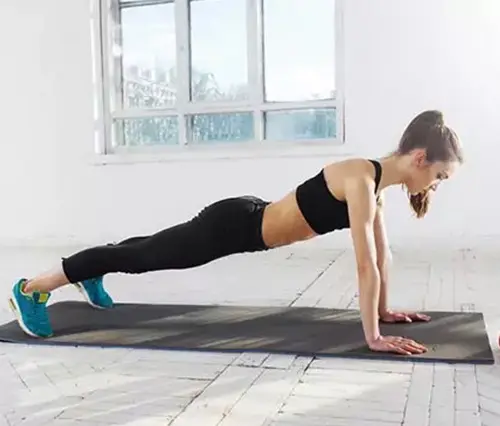
Push-ups are a powerful exercise for toning the upper body and core. Benefits of pushups for women include enhancing muscle strength, improving posture and cardiovascular health (12).
Target – Deltoids, chest, and triceps
How To Do
- Get into a plank position. Your elbows should be right below your shoulders, and hands slightly turned out. This is the starting position.
- Flex your elbows and lower your chest to the floor.
- Push your chest back up to the starting position.
Sets And Reps
3 sets of 12 reps each
Common Mistakes To Avoid
- Avoid letting your lower back sag or your hips rise, as this can strain your spine.
- Don’t flare your elbows out too wide; keep them at a 45-degree angle to protect the shoulders.
Adjustments For Different Fitness Levels
- Beginner: Perform push-ups on your knees or against a wall to reduce intensity.
- Intermediate/Advanced: Perform full push-ups with added pauses at the bottom or add claps for a challenge.
11. Decline Push-Ups
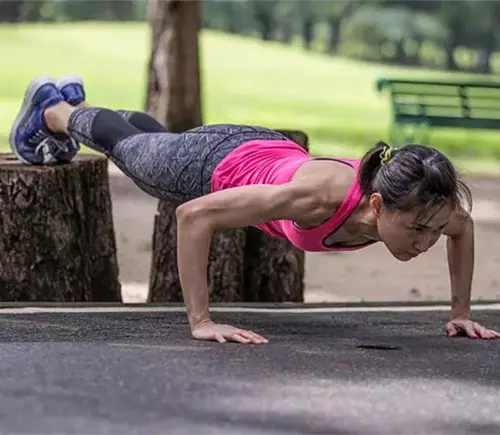
Decline push-ups are a variation where your feet are elevated on a platform, such as a bench, making the push-up more challenging. The elevated position shifts more of the body weight onto the upper body and arms, making the move more challenging.
Target – Deltoids, traps, lats, and biceps
How To Do
- Place your feet on an elevation (stairs, box, etc.).
- Get into a plank position. Your elbows should be right below your shoulders, and hands slightly turned out. This is the starting position.
- Flex your elbows and lower your chest to the floor.
- Push your chest back up to the starting position.
Sets And Reps
3 sets of 12 reps each
Common Mistakes To Avoid
- Don’t let your shoulders scrunch up towards your ears. Keep them relaxed and away from the neck.
- Ensure your hands are positioned correctly to avoid wrist strain.
Adjustments For Different Fitness Levels
- Beginner: Start with regular push-ups before adding the decline to build strength.
- Intermediate/Advanced: Increase the height of your feet or add a weighted vest to challenge your upper chest and shoulders more.
12. Plank Up And Down
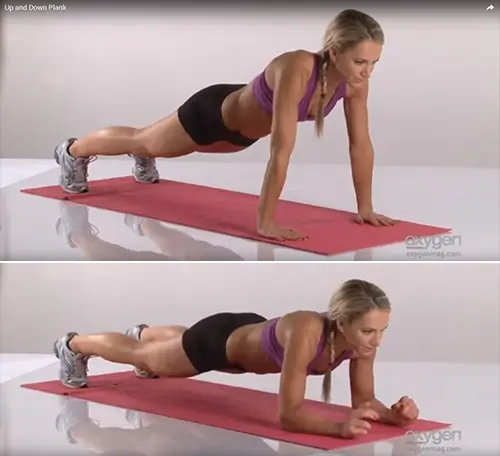
The plank up and down involves transitioning between a forearm plank and a full plank position (hands on the ground). This movement engages the core, shoulders, and arms while challenging your stability and endurance. It’s great for building overall core strength and endurance. Plank workouts may also help reduce lower back pain (13).
Target – Deltoids, traps, core muscles, triceps, and biceps
How To Do
- Get into the arm plank position.
- Flex your right elbow, make a fist, and get down.
- Flex your left elbow, make a fist, and get down. Right now, you are in an elbow plank position.
- Extend your left hand and get up.
- Next, extend your right hand and get back into the arm plank position.
- This completes one rep.
- Start with your left arm again.
Sets And Reps
2 sets of 10 reps
Common Mistakes To Avoid
- Don’t strain your neck by looking forward. Keep your head in line with your spine.
- Avoid moving too quickly. Remember, slow and controlled movements are key to engaging the core.
Adjustments For Different Fitness Levels
- Beginner: Start by holding a basic plank and work on transitioning slowly to the up-and-down movement.
- Intermediate/Advanced: Increase the speed of your transitions or hold a plank between each movement for added intensity.
13. Tricep Dips

Tricep dips are a bodyweight exercise that targets the triceps, the muscles on the back of the arms. You perform them by lowering your body down using your arms for support, typically with your hands on a bench or chair, then pressing back up. It also engages the shoulders and chest.
Target – Triceps, lats, and deltoids
How To Do
- Sit in front of a sofa or a bench.
- Place your back against it and your palms on the sofa or the bench.
- Keep your legs straight and lift your buttocks slightly off the floor. This is the starting position.
- Push the bench and lift your body.
- Get back down to the starting position.
Sets And Reps
3 sets of 8 reps
Common Mistakes To Avoid
- Don’t let your shoulders rise toward your ears, as this may cause tension in the neck.
- Don’t slouch! Keep your back straight during the movement.
Adjustments For Different Fitness Levels
- Beginner: Perform dips with your feet on the ground for support or use a lower surface to reduce the intensity.
- Intermediate/Advanced: Elevate your feet on a bench or add weight to increase resistance and challenge your triceps further.
Want to sculpt and strengthen your abs without the need for any equipment? Scroll down to the next section for the best no-equipment workouts at home. Whether you are a beginner or a seasoned fitness enthusiast, these exercises are perfect for you.
Abs
14. Russian Twist

The Russian twist is a core exercise that involves rotating your torso from side to side while sitting on the floor, often with your feet lifted or anchored for more challenge. This exercise targets the obliques and the entire core. It is often performed with a weight, such as a medicine ball or dumbbell for added intensity.
Target – Obliques and abs
How To Do
- Sit on a mat with your knees slightly flexed, heels on the mat, and palms together.
- Lean back slightly and lift both your legs off the floor.
- Twist to your right and then to your left.
- Do this 20 times before taking a break of 10 seconds.
Sets And Reps
3 sets of 20 reps
Common Mistakes To Avoid
- Keep your spine straight to prevent strain.
- Don’t perform the twist too quickly. Control the movement to fully engage the obliques.
Adjustments For Different Fitness Levels
- Beginner: Keep your feet on the floor to maintain control.
- Intermediate/Advanced: Add a weight or medicine ball to the twist for extra resistance, or elevate your feet for an added challenge.
15. Plank Toe Touch
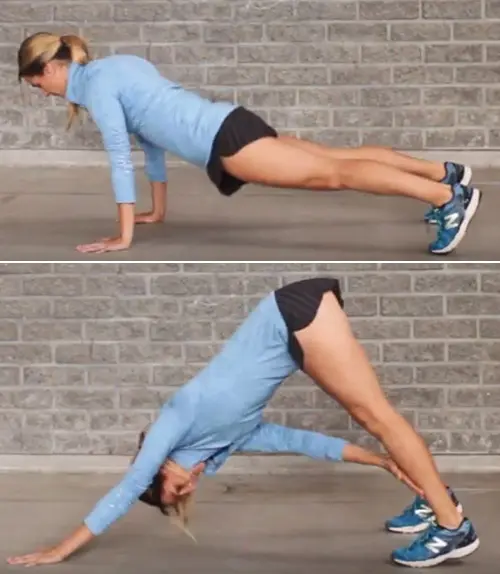
In the plank toe touch, you start in a standard plank position, then lift one leg and touch the opposite hand to your foot, alternating sides. This exercise engages the core, shoulders, and legs while improving balance and flexibility.
Target – Deltoids, lats, traps, biceps, abs, glutes, and hamstrings
How To Do
- Get into a plank position.
- Lift your left palm off the floor and touch your right foot. Push your hips up toward the ceiling while doing so.
- Get back to the starting position.
- Lift the right palm off the floor and touch your left toe.
- This completes one rep.
Sets And Reps
3 sets of 12 reps
Common Mistakes To Avoid
- Avoid letting your hips sag or rise during the movement, as it may reduce core engagement.
- Don’t strain your neck or head by looking upward. Instead, keep your head in line with your spine.
Adjustments For Different Fitness Levels
- Beginner: Start by performing a plank and then work on bringing one foot toward your hand before alternating.
- Intermediate/Advanced: Add a plank jack between each toe touch or hold the plank position for longer to increase intensity.
16. Double Leg Raises
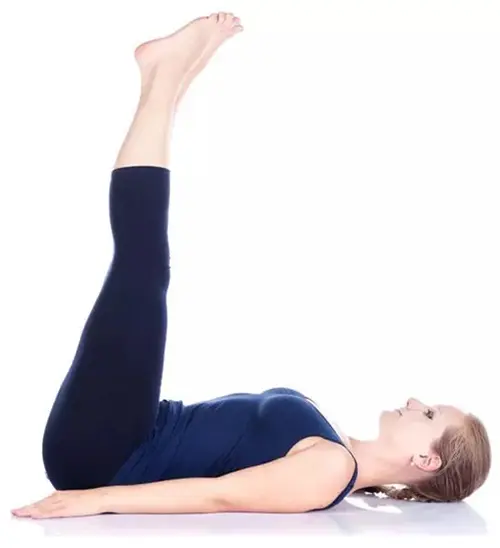
Double leg raises are a core exercise in which you lie flat on your back and lift both legs toward the ceiling while keeping your legs straight. This movement primarily targets the lower abs, hip flexors, and core.
Target – Lower abs and upper abs (rectus muscle) and hip flexors
How To Do
- Lie down on a mat. Place your palms beside your buttocks. Keep your abs engaged. This is the starting position.
- Lift both your legs until they are perpendicular to the floor.
- Slowly lower your legs.
- Right before your legs are about to touch the floor, lift them again.
Sets And Reps
3 sets of 20 reps
Common Mistakes To Avoid
- Avoid arching your back, as this can strain your lower back and reduce the effectiveness of the exercise.
- Don’t drop your legs too quickly. Control the movement to fully engage the core.
Adjustments For Different Fitness Levels
- Beginner: Perform single-leg raises to reduce intensity and improve core control.
- Intermediate/Advanced: Add ankle weights or increase the reps to challenge the lower abs more.
17. Alternating Leg Drops
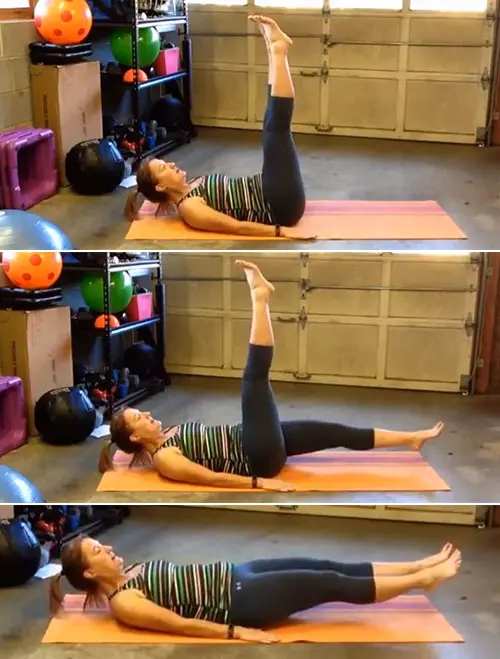
Alternating leg drops involve lying on your back with your legs straight and then lowering one leg towards the floor while the other remains in the air. You then alternate legs. This exercise works the lower abs while challenging core stability.
Target – Lower abs and upper abs (rectus muscle), glutes, and hamstrings
How To Do
- Lie down on a mat, place your hands close to your hips, and palms flat on the floor. Keep your knees soft.
- Lift both your legs straight up. This is the starting position.
- Drop your right leg.
- Bring it up again. Simultaneously, drop your left leg.
- This completes one rep.
Sets And Reps
3 sets of 10 reps
Common Mistakes To Avoid
- Avoid arching your back or letting it lift off the ground, as it could lead to discomfort in the lower back.
- Ensure your core is engaged throughout to protect the lower back.
Adjustments For Different Fitness Levels
- Beginner: Keep your legs bent at a 90-degree angle to reduce intensity and resistance.
- Intermediate/Advanced: Perform the leg drops with legs straight or add a slow hold at the bottom for more core activation.
The next step is to challenge your entire body. If you are ready for it, scroll down to the next section for the best no-equipment workouts at home.
Entire Body
18. Burpees
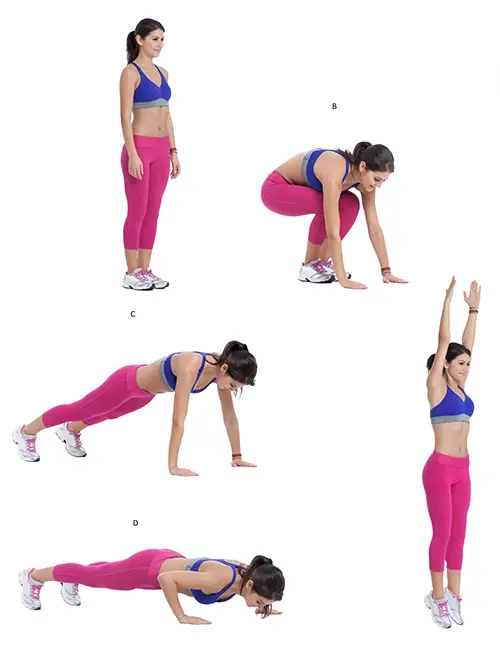
Burpees are a full-body exercise that combines a squat, a jump, and a push-up. You begin in a standing position, drop into a squat, kick your legs back into a plank position, perform a push-up, then jump back to standing and leap into the air. Burpees are excellent for building strength, speed, and power (14).
Target – Full Body
How To Do
- Keep your feet together and assume a squat down position. Place your arms on the ground in front of your feet.
- Keep your feet together and get ready to jump back so that you can land in a push-up position. Bend your forearms and perform a single push-up in this position.
- Jump back to the previous position and bring your feet beneath your body. Leap into the air.
- Land smoothly and bend your legs.
- Repeat these steps again and practice as long as you can.
Sets And Reps
Try to do 3 sets of 12 reps of burpees as fast as possible.
Common Mistakes To Avoid
- Avoid rushing through the movement. Perform each part with control to avoid injury.
- Avoid letting your knees collapse inward during the squat. Keep them aligned with your toes.
- Don’t perform the push-up portion with improper form.
Adjustments For Different Fitness Levels
- Beginner: Start by removing the jump or performing half-burpees, focusing on form and reducing impact.
- Intermediate/Advanced: Use a weighted vest for added intensity.
 Quick Tip
Quick Tip19. Mountain Climbers
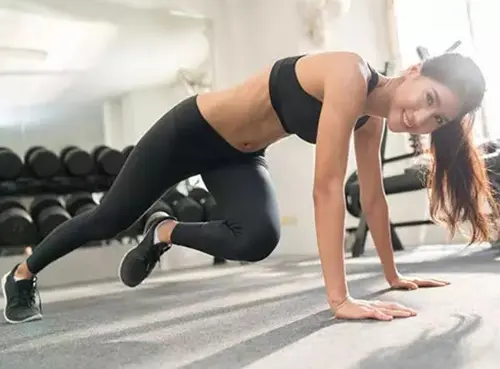
Mountain climbers are a high-intensity, full-body exercise where you start in a plank position and alternate driving your knees toward your chest in a quick, running motion. They target the core, shoulders, and legs while improving endurance and agility.
Target – Abs, lower back, glutes, hip flexors, hamstrings, quads, deltoids
How To Do
- Get into a plank position. Keep your core engaged.
- Flex your right knee and bring it close to your chest.
- Place your right leg back, hop, flex your left knee and bring it close to your chest.
- This completes one rep.
Sets And Reps
3 sets of 25 reps
Common Mistakes To Avoid
- Don’t let your hips rise too high or drop too low during the movement.
- Keep your core tight to avoid sagging in your lower back that can cause strain.
Adjustments For Different Fitness Levels
- Beginner: Slow down the movement and focus on form with fewer repetitions.
- Intermediate/Advanced: Increase speed or number of reps for added difficulty.
20. Bear Crawl
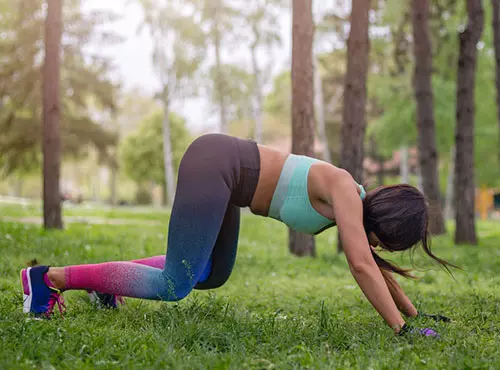
The bear crawl is a bodyweight exercise where you crawl on your hands and feet, keeping your hips low and your body in a tabletop position. This movement targets the core, shoulders, and legs while improving coordination and endurance.
Target – Core and whole body, especially the deltoid muscle, arms, and glutes
How To Do
- Get down on all fours, with the hands and shoulders in one line, and knees at a 90-degree angle.
- Keep your head high and stretch your spine completely. Your back must be parallel to the ground.
- Raise both the knees so that your entire body weight is on your hands and shoulders.
- Crawl forward by putting one hand and the opposite foot forward.
- Repeat with the other hand and foot.
- Ensure your knees do not touch the ground. Keep your hips down.
- Crawl a longer distance.
Sets And Reps
Try to crawl for 1 minute (3 sets), forward and backward.
Common Mistakes To Avoid
- Don’t lett your hips sag or rise too high. Instead, maintain a neutral spine to avoid back strain.
- Don’t let your knees touch the ground. Keep them hovering just above the floor.
- Keep your head in line with your spine to avoid neck strain.
Adjustments For Different Fitness Levels
- Beginner: Perform the bear crawl over shorter distances or focus on the movement without speed.
- Intermediate/Advanced: Increase speed or add a push-up at each point of the crawl for greater difficulty.
21. Inch Worm
The inchworm is a dynamic stretch and strength exercise where you stand up straight, bend forward to touch the ground, and walk your hands out into a plank position. You then walk your feet towards your hands and repeat the movement. This movement works the core, hamstrings, and shoulders while improving flexibility.
Target – Deltoid muscles and core muscles
How To Do
- Stand straight with feet hip-width apart, keeping your spine straight. Stretch and roll back your shoulders.
- Bend forward and touch the floor with both hands.
- Walk your hands forward, keeping your legs straight. Keep walking until your entire body is in a plank position.
- Walk your hands backward. This way, you will come to the starting position.
Sets And Reps
3 sets of 12 reps each
Common Mistakes To Avoid
- Avoid bending your knees excessively when reaching for the ground.
- Ensure your back is straight as you walk your hands forward to avoid straining the lower back.
Adjustments For Different Fitness Levels
- Beginner: Start by bending your knees slightly to reduce strain on the hamstrings.
- Intermediate/Advanced: Perform the inchworm with a push-up at the end or extend your reach further for a greater stretch.
22. Broad Jumps
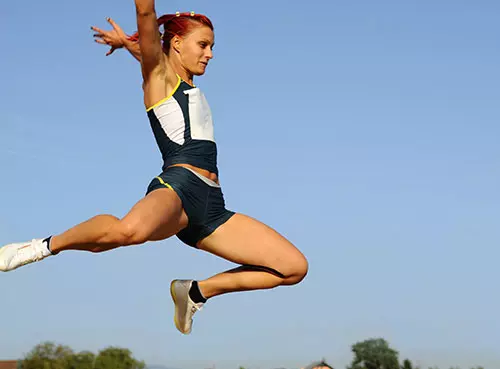
Broad jumps are explosive jumps where you squat down and jump forward as far as possible. This exercise targets the legs and may help improve coordination. It is also great for developing speed and strength in the lower body (15).
Target – Glutes, hamstrings, quads, calves, upper body, and arms
How To Do
- Stand straight with your feet shoulder-width apart and arms by your sides.
- Bend your knees and get into a partial squat position. Keep your back straight, chest up, and your weight on your heels.
- Swing your arms backward to build momentum.
- Push through your heels and extend your hips, knees, and ankles to jump forward as far as you can. Swing your arms forward and upward to help with the leap.
- Focus on landing softly and bending your knees to absorb the impact. Try to land with your weight distributed evenly on both your feet.
Sets And Reps
3 sets of 5 reps
Common Mistakes To Avoid
- Don’t let your knees collapse inward when landing, as it can cause joint stress.
- Avoid landing with stiff legs. Aim for a soft, controlled landing to prevent injury.
Adjustments For Different Fitness Levels
- Beginner: Start with a smaller jump distance or perform squat jumps instead to focus on strength before adding distance.
- Intermediate/Advanced: Increase the jump distance or add a sprint after each jump to intensify the workout.
Note: You can create a balanced weekly workout plan using the above-listed exercises. For example, dedicate one day to lower body exercises and another to upper body and core, then assign one day to full-body workouts, like burpees and mountain climbers. Also, add an active recovery day with light activities such as walking or yoga, and ensure at least one rest day to promote muscle recovery. This balanced approach will support overall fitness and strength development.
These calisthenics exercises can keep you fit and healthy for a long time if done regularly. Full-body exercises at home. such as circuit training, tabata workouts, isometric exercises, plyometrics (that involves stair workouts), chair exercises, hip bridges, bicycle crunches, HIIT (high-intensity interval training), yoga, shadowboxing, supermans and dance workouts, and Russian twists may help you shed some extra weight and improve your overall fitness. Don’t believe this? Scroll down to the next section to find out if no-equipment exercises are actually beneficial.
Are No-Equipment Workouts Really Beneficial?
Yes, they are! The biggest benefit of no-equipment exercises is that you can do them anywhere, be it at home, outdoors, or while traveling. There is no need to buy or store equipment. These workouts often rely on bodyweight exercises, known to improve strength, flexibility, and balance. Movements like push-ups, squats, lunges, and planks engage multiple muscle groups.
A study published in the International Journal Of Exercise Science looked at how bodyweight exercise can improve fitness, specifically how well the body can take in and use oxygen while exercising. The exercises in this study included movements like burpees, high knees, and squat jumps. These exercises were done in a short 11-minute session, three times a week, for six weeks. After six weeks, the training group showed improvements in their ability to take in oxygen during exercise. This suggests that their heart and lungs became more efficient. They also showed better peak power output, the amount of force they could produce when pushing themselves during exercise (16).
This indicated that bodyweight exercises that don’t require special equipment can help inactive adults improve their heart and lung fitness, making them a good option for people who want simple, time-efficient workouts.
If you are a beginner, you must keep certain things in mind.
Things To Remember
- Do not try complex moves. Start with stretching and full-body workouts like jumping jacks, box jumps, and basic squats. This will help your body slowly adjust to the new regimen.
- Involve your entire body. This includes your lower body, the sides, the upper body, and the core. This way, you will engage all the muscle groups.
- Do not strain too much. If you are feeling any discomfort, stop. Allow your body to completely cool down.
- Drink plenty of water before, during, and after your workouts to stay energized and help your body recover.
- Lastly, do not forget to give your body a nice full stretch.
Additionally, before beginning any new workout routine, consult a healthcare professional, physiotherapist, or trainer. They can help determine the most appropriate exercises based on your individual health needs and ensure you are performing the exercises safely. This is especially important if you have chronic conditions such as heart disease, diabetes, joint problems, or any other health issues. Always listen to your body and seek medical advice if you experience any discomfort or pain during exercise.
Infographic: Benefits Of No-Equipment Workouts
While many of you might like going to the gym for a proper fitness regimen, working out at home, without any equipment, has its own share of benefits. Have a look at the infographic below to know how an equipment-free workout at home can also be beneficial for you.
Some thing wrong with infographic shortcode. please verify shortcode syntax
If you wish to do no-equipment workouts at home, bodyweight exercises are for you. They work on your whole body and help you save big on your time and gym expenses. The exercises discussed in this article work on almost all the major body muscles — calves, quads, outer and inner thighs, glutes, hamstrings, hip flexors, quadriceps, deltoids, lats, traps, biceps, triceps, abs, obliques, and lower back. Complement these exercises with the right diet and healthy lifestyle to bring out the fitter individual in you. If you face any difficulties, stop and let your body cool down. Once you are done with the session, go for stretching exercises to cool down your body.
Frequently Asked Questions
What is the best full-body workout at home?
According to Kim Preveza, a yoga instructor, the best full-body workout at home is a plank. She adds, “It works the whole body. It can be done on the knees if a full plank is a too much effort. It can also be done on the elbows if it is too much strain on the wrists or elbows. Also, it can be done on the wall or the kitchen counter if a plank on the floor is not accessible.”
Can you build muscle mass with bodyweight exercises?
Bodyweight exercises are meant to tone your entire body and shed extra fat. If you want to build muscle mass, you may practice these exercises with dumbbells.
Is it OK to do bodyweight exercises every day?
Yes, it is absolutely OK to do bodyweight exercises every day. But focus on different body parts each day instead of doing everything in one day. Try to include cardio and breathing exercises as well for better results.
How long should a bodyweight workout last?
It depends on what type of exercise you are doing. But any bodyweight exercise should not last for more than 3 minutes.
Do bodyweight exercises burn fat?
Yes, bodyweight exercises help burn extra fat and tone your body. As you are using your own body weight against gravity, they also help burn more calories.
Can you get a six-pack from bodyweight exercises?
No, you cannot get six-pack abs with bodyweight exercises. But the exercises will help to strengthen your core. For six-pack abs, you can combine these exercises with weight training and a diet plan.
How many days a week should I do bodyweight training?
You can do bodyweight training 3-4 days in a week.
Which bodyweight exercises burn the most calories?
The full-body bodyweight exercises can help burn the most calories.
Is bodyweight training cardio?
Yes, bodyweight training builds cardiovascular endurance. When you have your own bodyweight to move about with, you don’t need any expensive cardio equipment.
How long should you work out in a day?
Try to work out for at least 30 minutes a day. You may gradually increase the duration by a few minutes as you see yourself getting stronger. However, working out for 30 minutes every day is ideal for optimal health.
Does walking count as exercise?
Yes, walking 10,000 steps or for 30 minutes can be considered a simple form of exercise that helps you stay active and healthy.
What’s the 7 minute workout?
It is a high-intensity workout that alternates between 30 seconds of high-intensity exercise and 10 seconds of rest.
Illustration: Amazing No-Equipment Full-Body Workouts To Do At Home
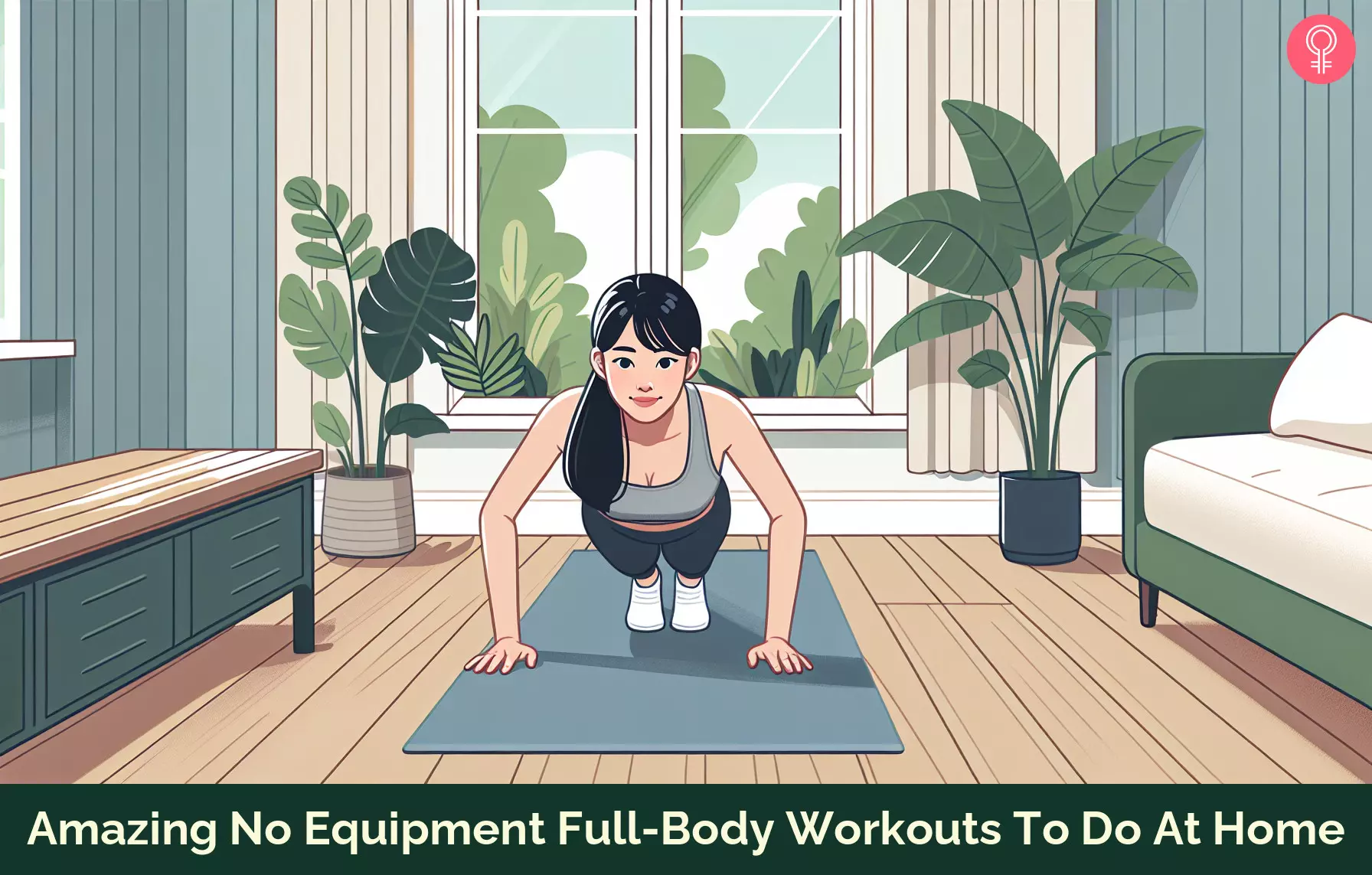
Image: Dall·E/StyleCraze Design Team
Personal Experience: Source
StyleCraze's articles are interwoven with authentic personal narratives that provide depth and resonance to our content. Below are the sources of the personal accounts referenced in this article.
i. My Experiment with Daily Squattinghttps://haroldgibbons.com/2012/08/21/my-experiment-with-daily-squatting/
Get ready to sweat with this 20-minute full-body home workout that requires no equipment and will have you feeling the burn in no time. Click on this video to know more!
References
Articles on StyleCraze are backed by verified information from peer-reviewed and academic research papers, reputed organizations, research institutions, and medical associations to ensure accuracy and relevance. Read our editorial policy to learn more.
- Slow Movement Resistance Training Using Body Weight Improves Muscle Mass in the Elderly: A Randomized Controlled Trial, Scandinavian Journal of Medicine & Science in Sports, US National Library of Medicine, National Institutes of Health.
https://pubmed.ncbi.nlm.nih.gov/29247985// - Effects of bodyweight-based exercise training on muscle functions of leg multi-joint movement in elderly individuals, Geriatrics & Gerontology International, US National Library of Medicine, National Institutes of Health.
https://pubmed.ncbi.nlm.nih.gov/19702936/ - Warm-Up Strategies for Sport and Exercise: Mechanisms and Applications, Sports Medicine, US National Library of Medicine, National Institutes of Health.
https://pubmed.ncbi.nlm.nih.gov/26400696/ - Effect of calf-raise training on rapid force production and balance ability in elderly men, US National Library of Medicine, National Institutes of Health.
https://pmc.ncbi.nlm.nih.gov/articles/PMC5583613/ - The Use of Free Weight Squats in Sports: A Narrative Review-Squatting Movements, Adaptation, and Sports Performance: Physiological, US National Library of Medicine, National Institutes of Health.
https://pubmed.ncbi.nlm.nih.gov/39072660/ - Improved Maximum Strength, Vertical Jump and Sprint Performance after 8 Weeks of Jump Squat Training with Individualized Loads, US National Library of Medicine, National Institutes of Health.
https://pmc.ncbi.nlm.nih.gov/articles/PMC4974862/ - Influence of Different Load Conditions on Lower Extremity Biomechanics during the Lunge Squat in Novice Men, US National Library of Medicine, National Institutes of Health.
https://pmc.ncbi.nlm.nih.gov/articles/PMC9311947/ - Patellofemoral Joint Loading During the Performance of the Forward and Side Lunge with Step Height Variations, US National Library of Medicine, National Institutes of Health.
https://pubmed.ncbi.nlm.nih.gov/35136686/ - Effects of Six Weeks Donkey Kick and Squat Resistance Exercises on Gluteal Adiposity, Muscle Strength, and Muscle Bulk of Young Nigerian Female Adults: A Randomized Controlled Trial, ResearchGate
https://www.researchgate.net/publication/340398104_Effects_of_Six_Weeks_Donkey_Kick_and_Squat_Resistance_Exercises_on_Gluteal_Adiposity_Muscle_Strength_and_Muscle_Bulk_of_Young_Nigerian_Female_Adults_A_Randomized_Controlled_Trial - Comparison of EMG Activity between Single-Leg Deadlift and Conventional Bilateral Deadlift in Trained Amateur Athletes – An Empirical Analysis, US National Library of Medicine, National Institutes of Health.
https://pmc.ncbi.nlm.nih.gov/articles/PMC8136577/ - The effects of isometric wall squat exercise on heart rate and blood pressure in a normotensive population, US National Library of Medicine, National Institutes of Health.
https://pubmed.ncbi.nlm.nih.gov/23879248/ - Association Between Push-up Exercise Capacity and Future Cardiovascular Events Among Active Adult Men, US National Library of Medicine, National Institutes of Health.
https://pmc.ncbi.nlm.nih.gov/articles/PMC6484614/ - Effects of plank exercise on respiratory capacity, physical fitness, and immunocytes in older adults, US National Library of Medicine, National Institutes of Health.
https://pmc.ncbi.nlm.nih.gov/articles/PMC10766451/ - The Influence of Burpee on Endurance and Short-Term Memory of Adolescents, US National Library of Medicine, National Institutes of Health.
https://pmc.ncbi.nlm.nih.gov/articles/PMC9517252/ - Handheld-Load-Specific Jump Training over 8 Weeks Improves Standing Broad Jump Performance in Adolescent Athletes, US National Library of Medicine, National Institutes of Health.
https://pmc.ncbi.nlm.nih.gov/articles/PMC9690281/
Read full bio of Rakesh Rathod
- Michael Garrico is an ASCM and NCSF certified personal fitness trainer and nutritionist and has more than 14 years of experience in helping people shed excess weight and get into shape. He completed his education at Indiana State University in Physical Education.
 Michael Garrico is an ASCM and NCSF certified personal fitness trainer and nutritionist and has more than 14 years of experience in helping people shed excess weight and get into shape. He completed his education at Indiana State University in Physical Education.
Michael Garrico is an ASCM and NCSF certified personal fitness trainer and nutritionist and has more than 14 years of experience in helping people shed excess weight and get into shape. He completed his education at Indiana State University in Physical Education.
Read full bio of Ravi Teja Tadimalla
Read full bio of Sindhu Koganti








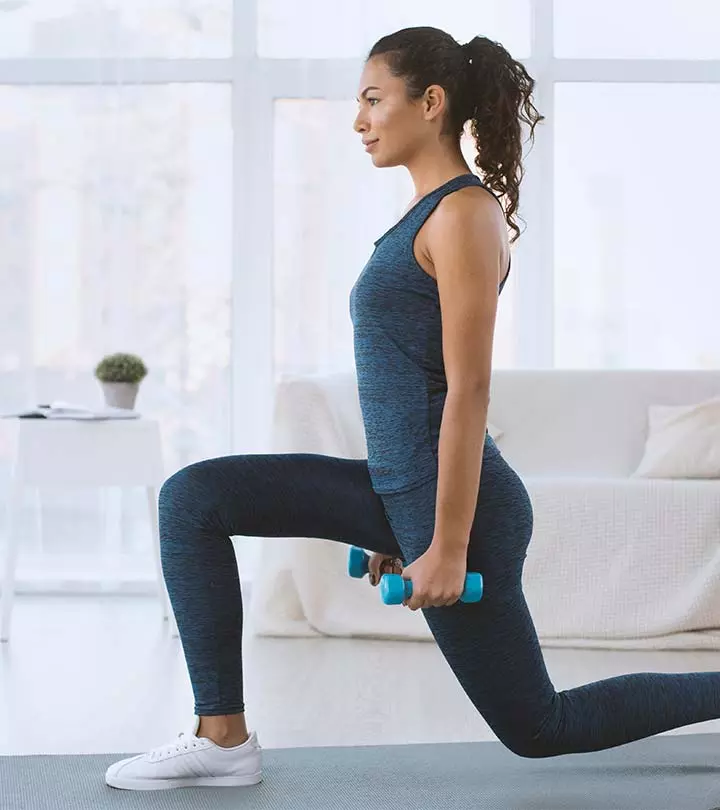
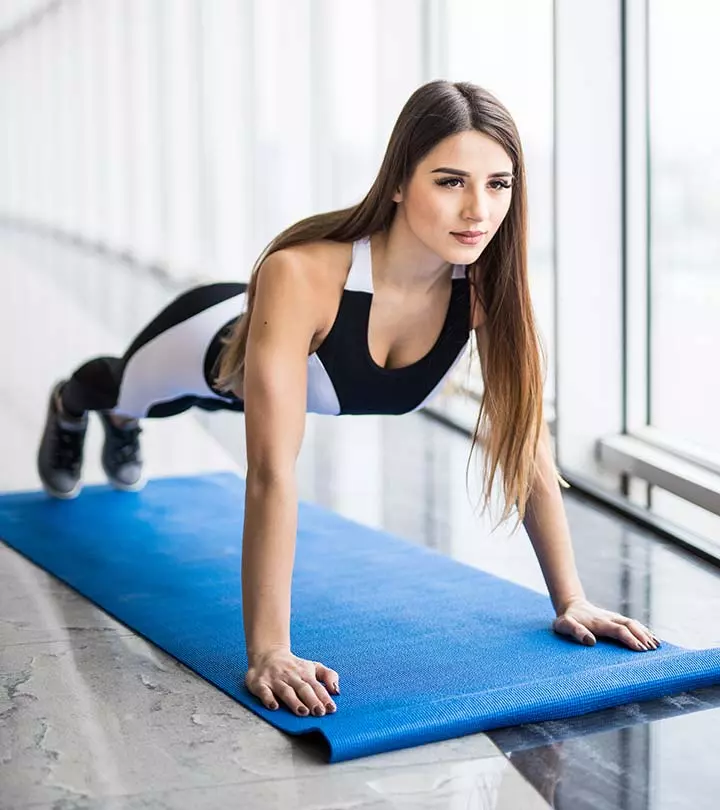

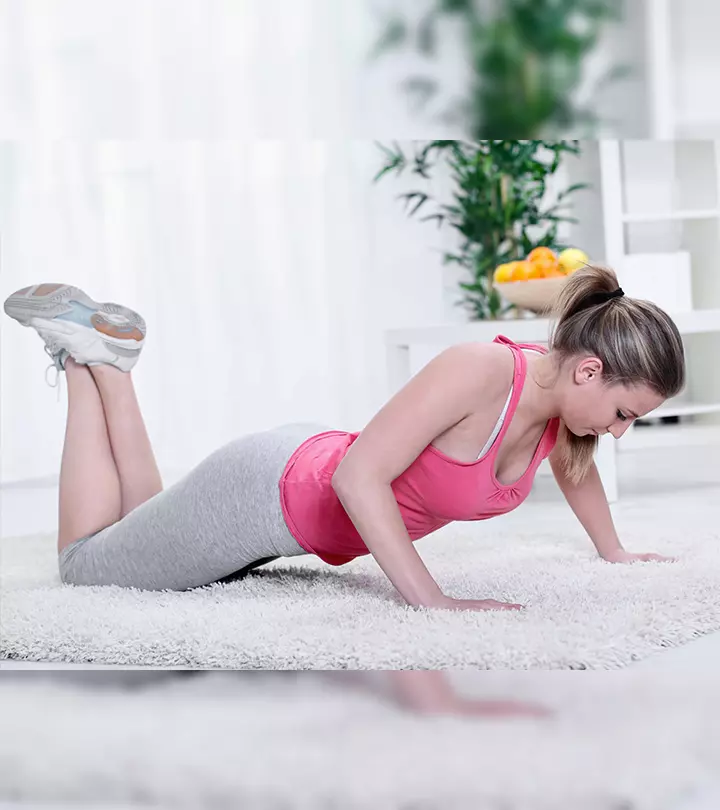
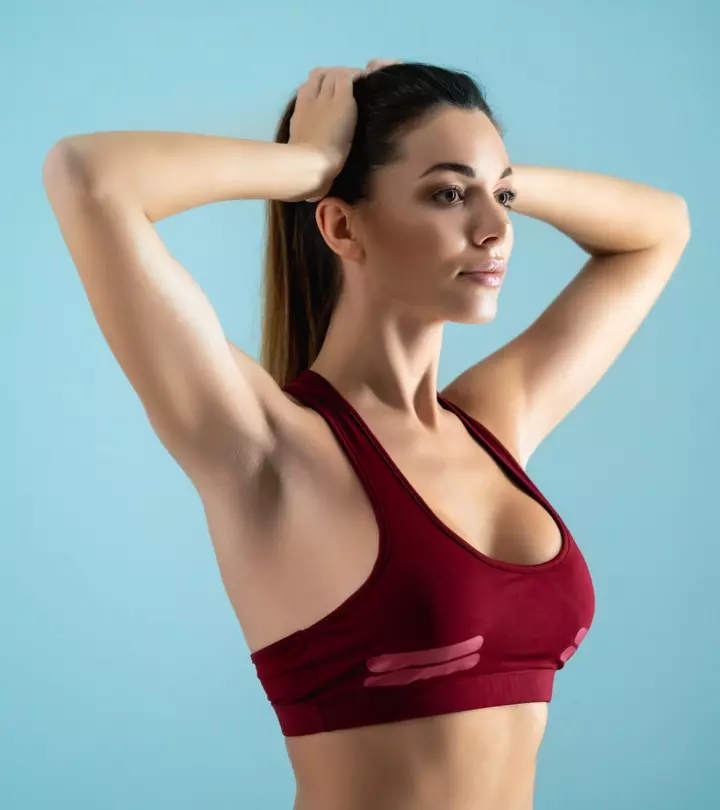
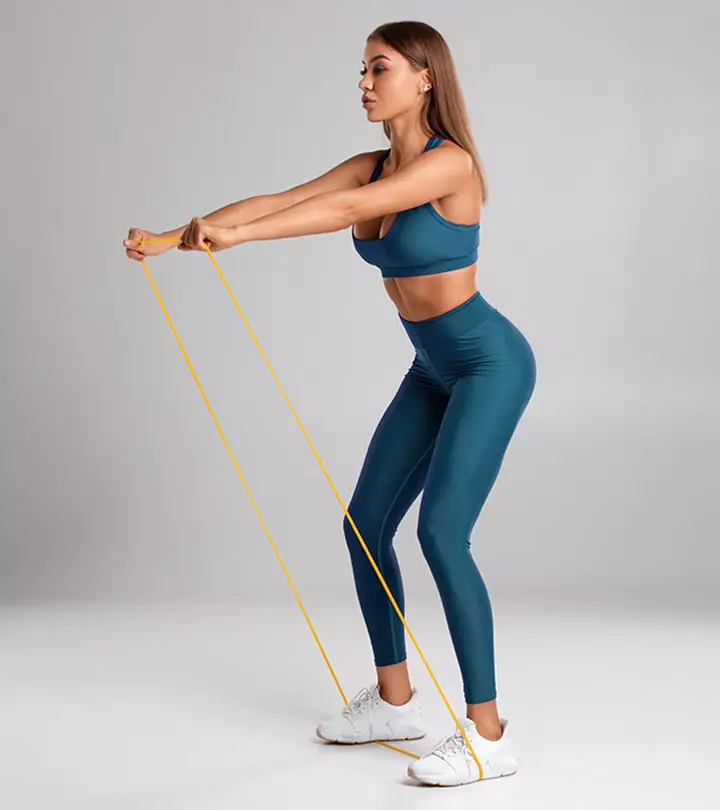
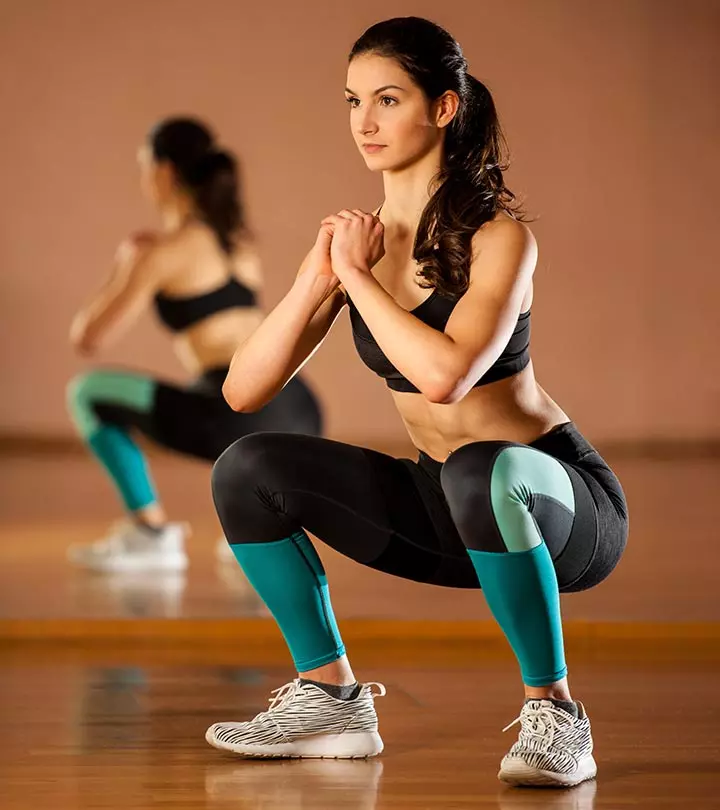
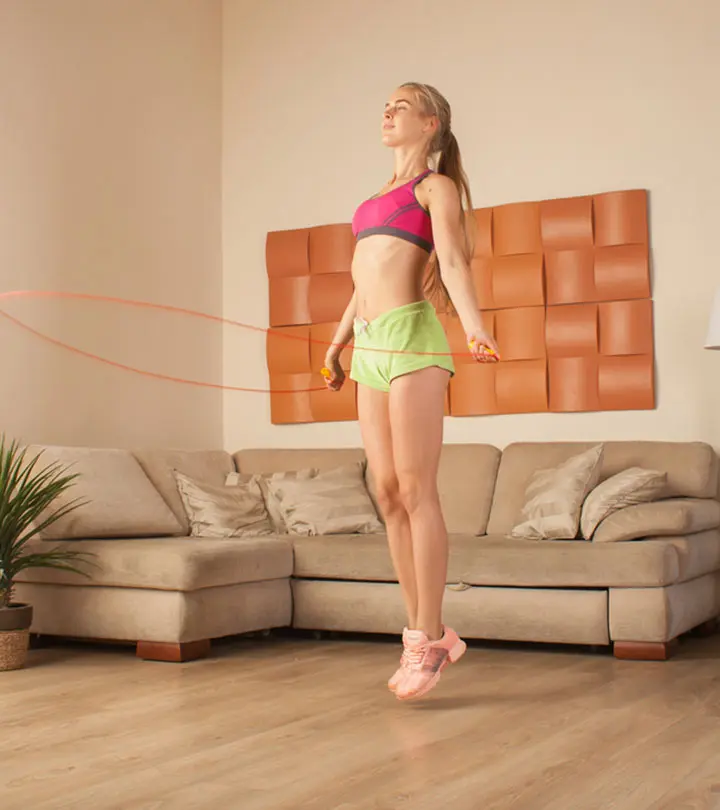

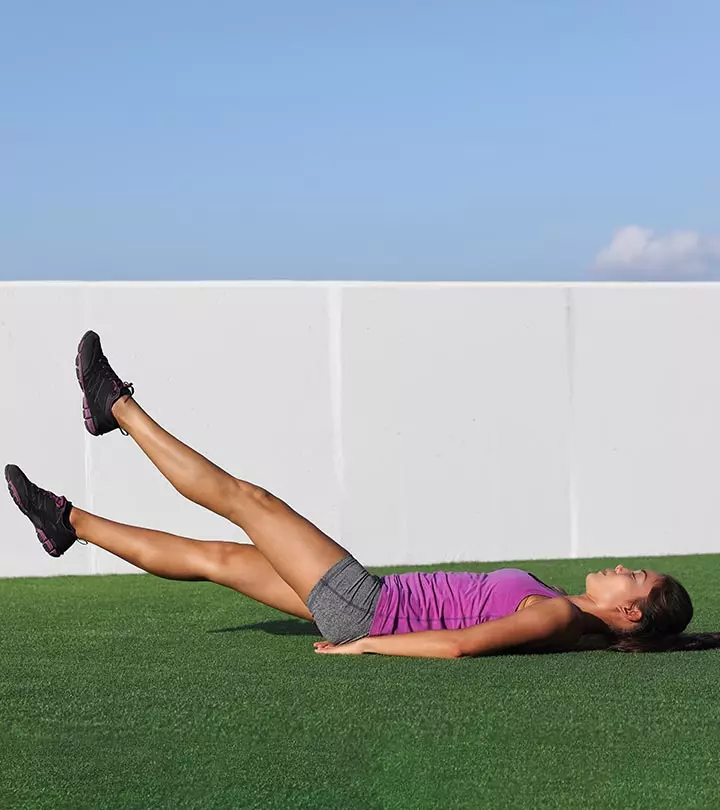
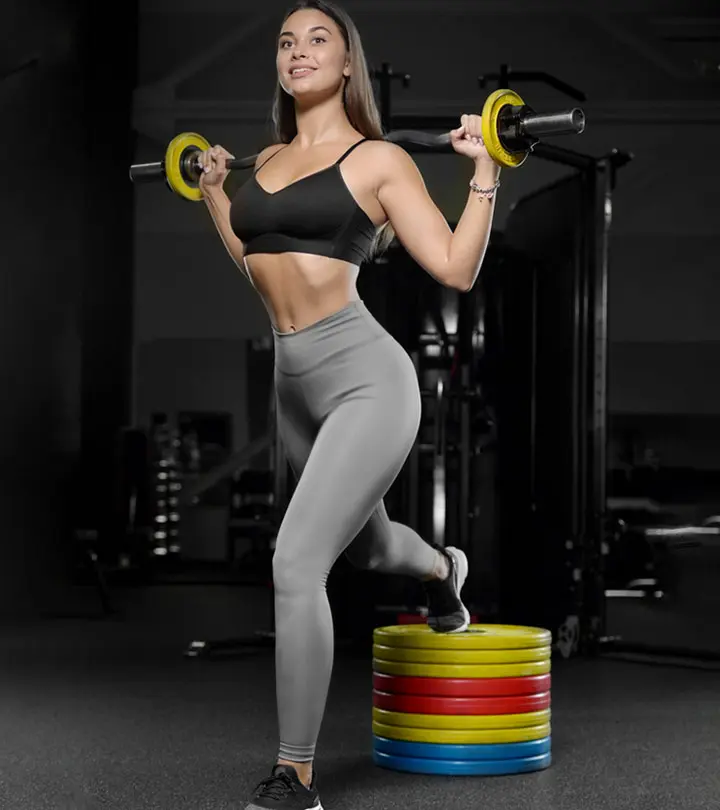
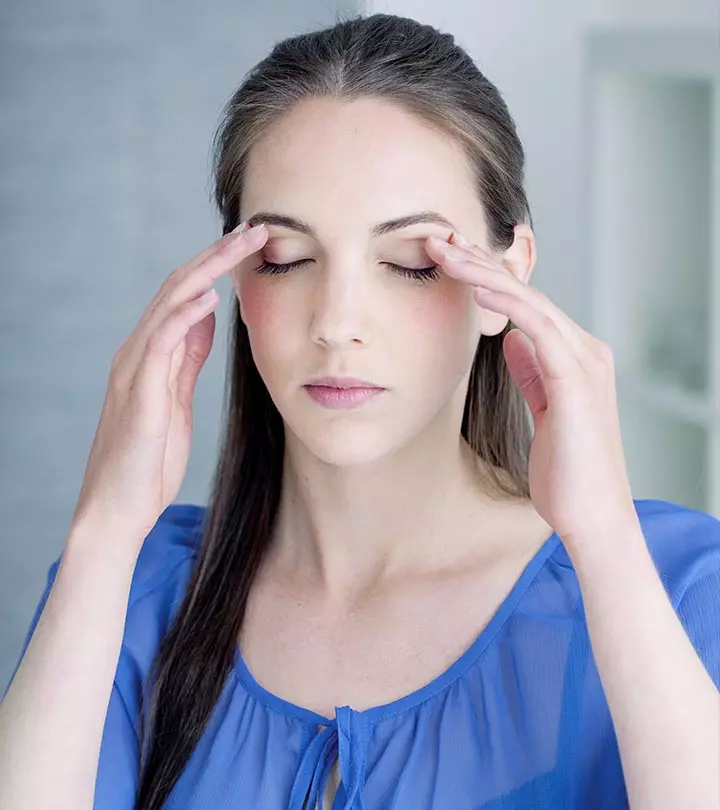

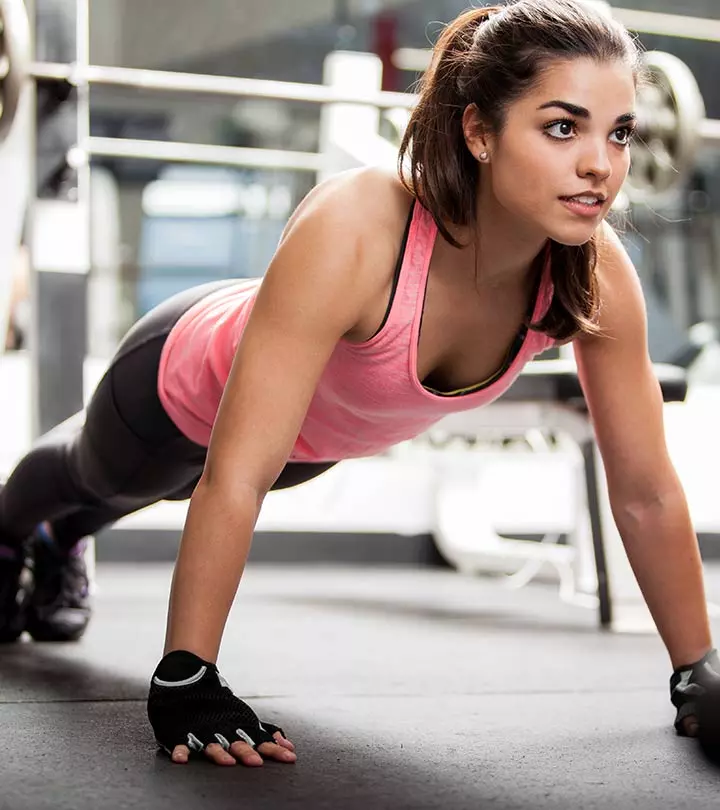
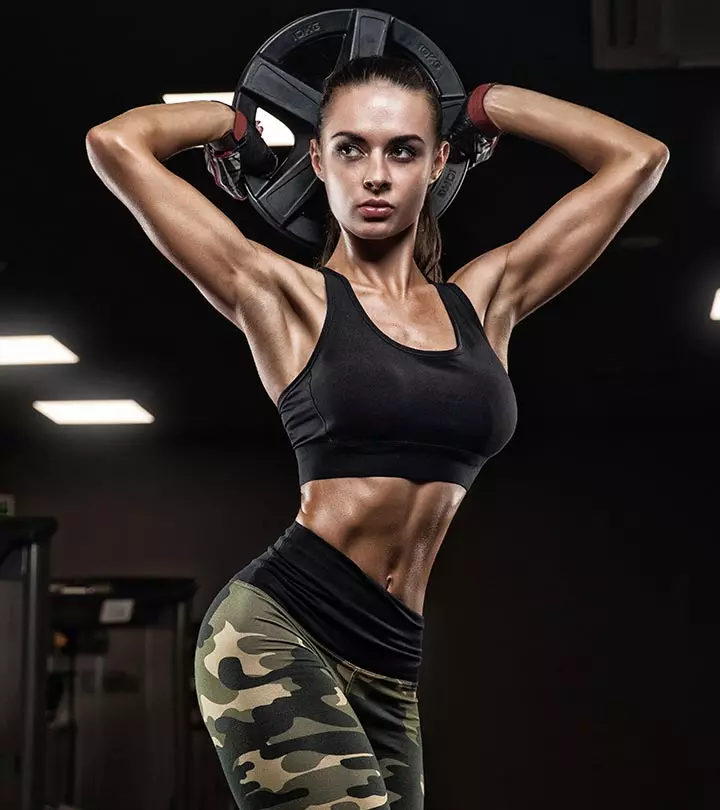
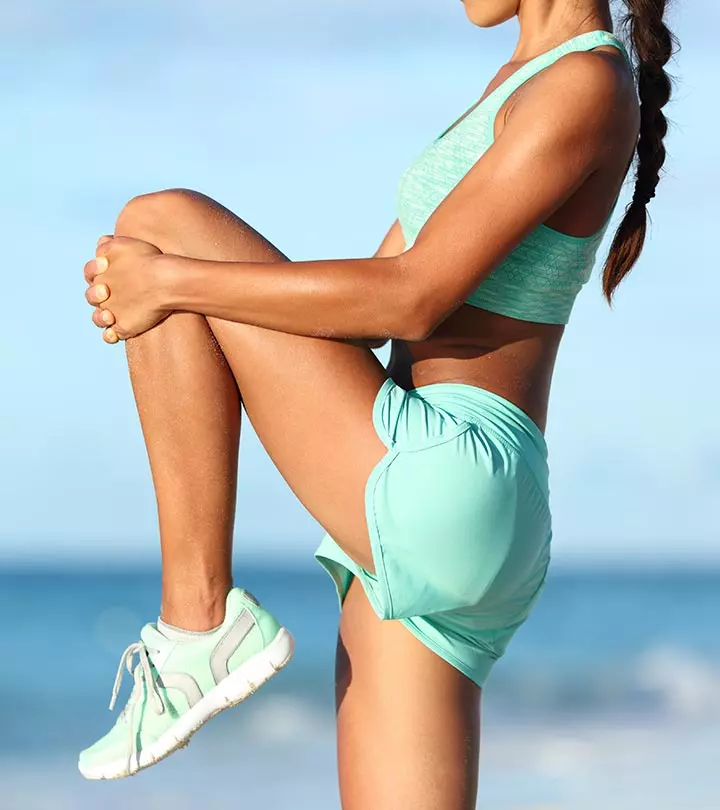
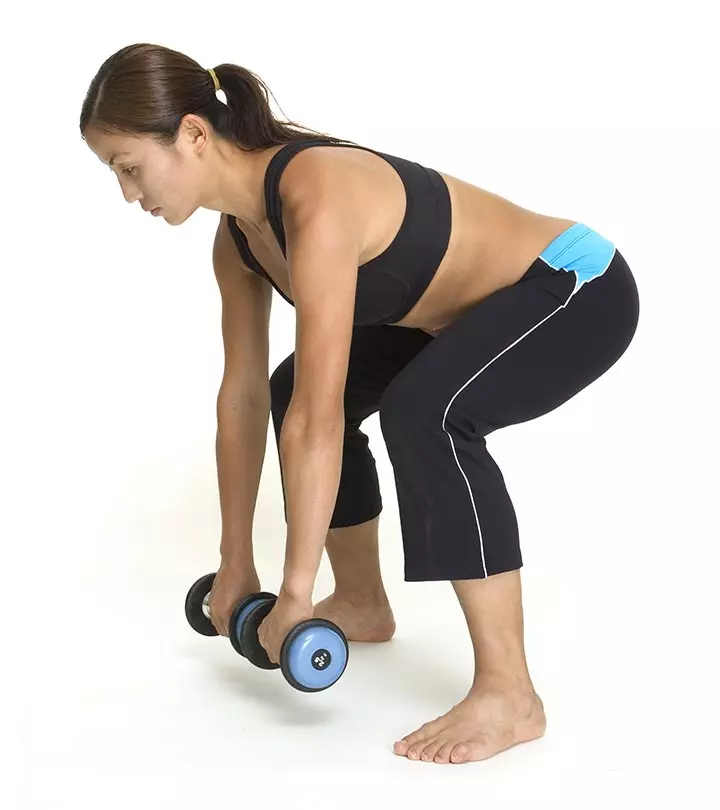

Community Experiences
Join the conversation and become a part of our empowering community! Share your stories, experiences, and insights to connect with other beauty, lifestyle, and health enthusiasts.